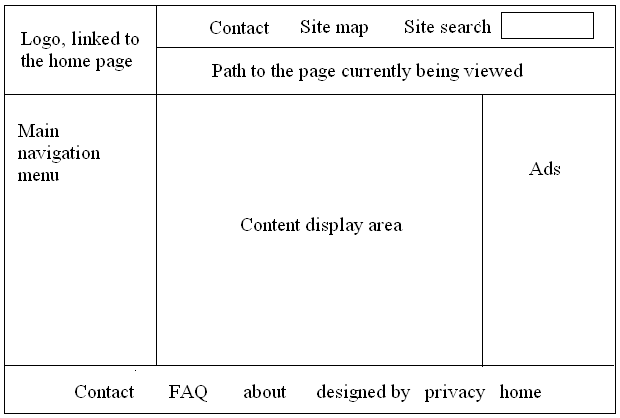
If the file name for your home page is the default file name for your Web server, users will be able to retrieve it without typing the file name.
Web designers typically plan three aspects of a home page:

One should always consider the user in home page design. Why are they coming to your Web site? What sort of hardware and Internet connection do they have? Are they sophisticated Internet users? Etc. Etc. Note that a home page does not have to be complex. Consider Google.com, which is focused on what the user most likely wants to do and very simple to use.
We will create a home page for our class, which will contain links to each student's home page. Ours will be very simple -- we will focus on navigation, ignoring graphic design.
For more on page design, check out Jakob Nielsen's Alertbox site.